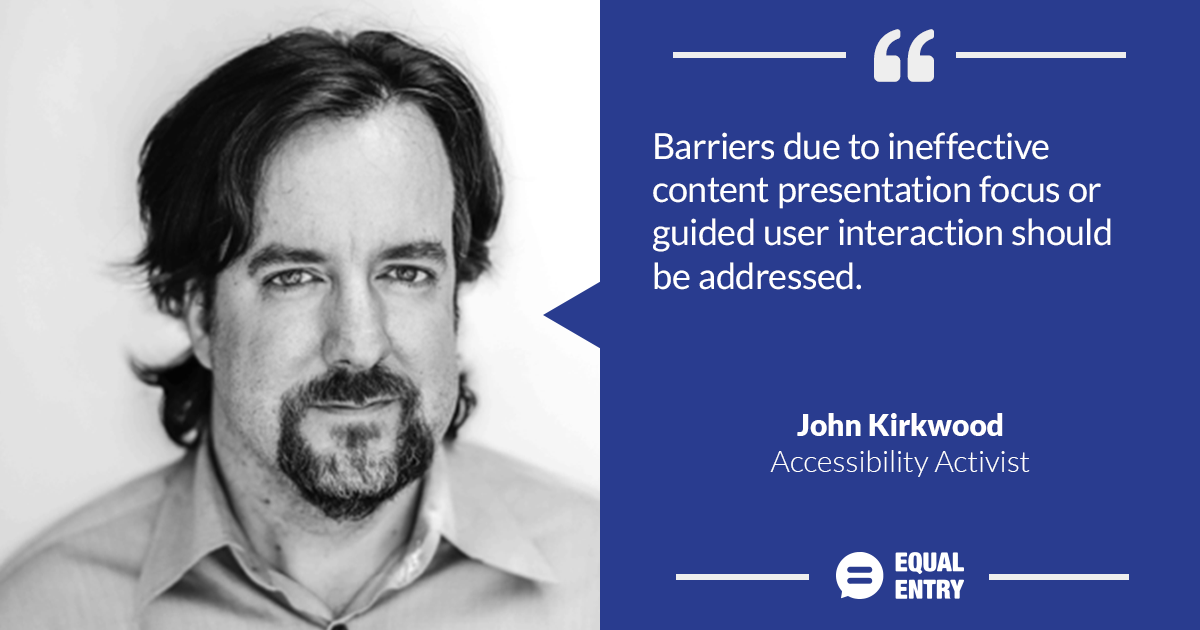Summary

This installment of our Accessibility Activists is an interview with John Kirkwood from CityMouse, one of New York’s first independent Internet media agencies.
When did you first get started in accessibility?
Well, accessibility has always been a part of our government standards and guidelines I wrote since I built the first official website for the City of New York in 1996. We always ensured we made best efforts to meet all current W3C standards & practices as they evolved (as a past member). However, it was since I became disabled myself in 2007, I became aware of the increasing accessibility gap in online services.
I subsequently certified my web development company company as one of the nations first USBLN® Certified Disabled Owned Business Enterprise DOBE® in 2010. This is the time when web accessibility became our focus.
What project are you most proud of from your work in accessibility?
Generally I think it would be the accessibility of government services to millions of people through the City Of New York’s official website. The development of accessible information for the entire City of New York and its public services received global acclaim, and at the time it won Best of the Web. It demanded inter-agency training of personnel to put information on the Internet in accordance with developing standards for equal access. I am proud so say it was one of the most accessed, universal, effective, and accessible government websites online. This experience and its fundamental principals are what continue to drive us today.
What is your current area of focus in the accessibility field?
Our focus in the accessibility field is making information accessible to all people including people with cognitive and neurological disabilities. We have found this can globalize in interesting ways, and make information more accessible for a distracted user or a mobile user while incorporating the latest W3C WCAG 2.0 guidelines. This focus demands deep knowledge of design principals based on current knowledge of technical web standards. This can globalize to making information more accessible for a distracted user or a mobile user for a safe, satisfying, and productive user experience.
What accessibility barrier would you like technology to solve?
In particular, barriers for people with cognitive and neurological disabilities.
Barriers due to ineffective content presentation focus or guided user interaction should be addressed. This would be achieved through a combination of technology, accessibility consulting, and enhanced CMS navigation templates, accompanied by experienced design services. It would also involve integrating cognitively accessible navigation templates with a floating accessible navigator ‘FAN’ into client content management systems. Quality would be assured through user testing to ensure the interface will accommodate the cognitively disabled user.
Watch John Kirkwood’s recent presentation at NYU’s Ability Lab.